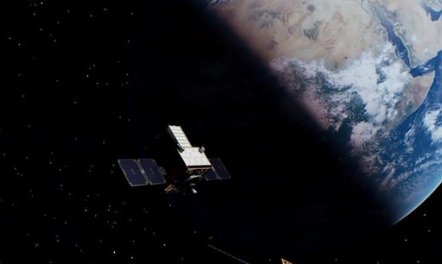This is the asteroid that may be our first target to move out of the way on its next approach to Earth after this one next year. It is way too close for comfort and can do incredible damage if allowed to hit us
Around this time next year, an asteroid the size of a cruise liner, named Apophis, will pass within 19,883 miles (32,000 kilometers) of Earth on April 13, 2029. This close encounter has drawn significant interest, particularly from the European Space Agency (ESA), which has announced plans for its new Ramses spacecraft to accompany Apophis before and after its flyby.
Apophis, measuring 1,230 feet (375 meters) across, will come closer to Earth than many satellites and ten times nearer than the moon. This proximity will allow around 2 billion people across Europe, Africa, and parts of Asia to see it with the naked eye.
An asteroid as big as a cruise liner will zoom by Earth in 2029, and scientists are sending a spacecraft to follow it#ramses #apophis #esahttps://t.co/vR5uBXFv9i
— BBC Sky at Night Magazine (@skyatnightmag) July 17, 2024
To reach Apophis by February 2029, the Ramses spacecraft must launch in April 2028. Preparations are already underway, but the final decision on the mission will be made at ESA’s Ministerial Council meeting in November 2025.
Discovered in 2004, Apophis was initially feared to pose a risk of collision in 2029 and 2068. However, further observations have ruled out any threat for at least the next century. The asteroid, named after the Egyptian god of chaos and darkness, is thought to be peanut-shaped.
Scientists use radar and telescopes to study near-Earth objects and their potential dangers. Apophis’s close approach offers a unique opportunity, as such a large asteroid only comes this close to Earth once every 5,000 to 10,000 years.
Both ESA and NASA are keen to take advantage of this event. ESA’s Ramses mission aims to observe Apophis during its close flyby, while NASA’s OSIRIS-APEX mission, formerly OSIRIS-REx, will engage with Apophis after it passes Earth.
Apophis is an S-type asteroid, meaning it is stony and differs from the carbon-rich C-type asteroids like Bennu, previously visited by NASA. Understanding S-type asteroids is crucial for developing strategies to deflect them if necessary.
Asteroid Apophis will visit Earth in 2029, and this European satellite will be along for the ride https://t.co/uygTS6PmzN
— crystal sanger (@BrainFullOfTabs) July 17, 2024
The Ramses mission will capture detailed observations of Apophis, including its shape, surface, orientation, and orbit. The spacecraft will also monitor changes caused by Earth’s gravity, such as potential quakes or shifts in the asteroid’s rotation and orbit, providing insights into its internal structure.
Ramses will showcase the ability to quickly deploy a reconnaissance mission to an incoming asteroid, a key element in planetary defense strategies. This mission will work alongside NASA’s OSIRIS-APEX, which aims to study Apophis by using gas thrusters to disturb its surface and analyze the materials.
As Asteroid #Apophis and the proposed ESA #RAMSES mission to track it through its 2029 Near Earth encounter are in the news, a link to our recent Science in Action special with all the experts here –https://t.co/aKW3qy15SS
— Roland Pease (@PeaseRoland) July 16, 2024
The collaboration between ESA and NASA on studying Apophis is a significant step in international efforts for planetary defense and scientific research. Previous successful collaborations include NASA’s DART mission, which tested asteroid deflection by impacting Dimorphos, and ESA’s upcoming Hera mission to study the aftermath of this impact.
Key Points:
- The asteroid Apophis will come within 19,883 miles of Earth on April 13, 2029, visible to around 2 billion people.
- ESA plans to launch the Ramses spacecraft in April 2028 to accompany Apophis during its close flyby.
- Apophis, an S-type asteroid, presents a rare opportunity for close study, with no threat to Earth for at least a century.
- The Ramses mission will observe changes in Apophis caused by Earth’s gravity, providing insights into its composition and structure.
- ESA and NASA’s collaboration on Apophis highlights the importance of international efforts in planetary defense and scientific research.
Kirk Volo – Reprinted with permission of Whatfinger News



